In what I’m sure is not terribly uncommon for those who create, I have a strange relationship with the things I’ve made in the past. As a musician, it’s refreshing to revisit and reflect on the oft-spontaneous choices that were made; it’s also sometimes irksome, from a production standpoint, to hear your novice mixing job, to compare to what you’ve learned since. Often, my memories of a particular song or album are shaped by the events that were hovering in life’s periphery, which, to me, gives it an autobiographical feel, even if that doesn’t necessarily translate for the listener. In turn, that album becomes another feature on the landscape of life at that time, impossible to forget.
In 2008, I released the Obfusc album Cities of Cedar with my good friends Murray and Wil at Boltfish Recordings in London. Then, it truly felt like a personal accomplishment; the first time, in my mind, that I’d created an album, not just a group of tracks. It also felt, to me, like one step closer to the type of music I’d hoped to create as Obfusc. Eight years later, it’s become the most well-known thing I’ve produced (thanks in large part to the Monument Valley soundtrack); it seemed a fine time to finally put some commentary behind it for those who may be interested.
Album Artwork & Title
I paired the album with a title and artwork that were derived from a series of imagined landscapes I’d done — taking photos culled from random trips and blending them together. The first of these images were super graphic, almost crude, but I really had fun making; I titled this one “Alpine Canals” (a combination of buildings and a canal in the Netherlands along with a rail station in the Austrian Alps):
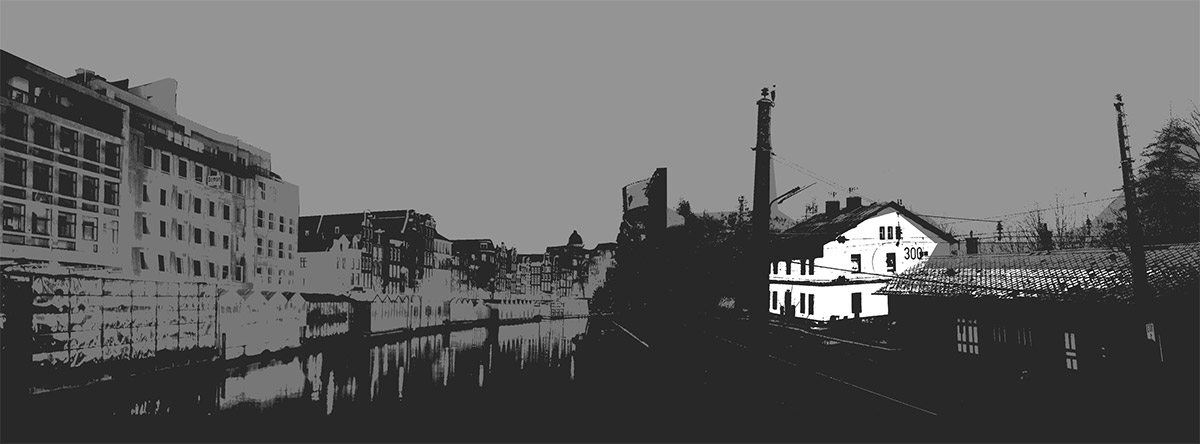
For the “Cities” artwork, it was an imagined landscape I’d hastily titled “Private Road,” built primarily from two photos taken in Maine (on an, ahem, private road).
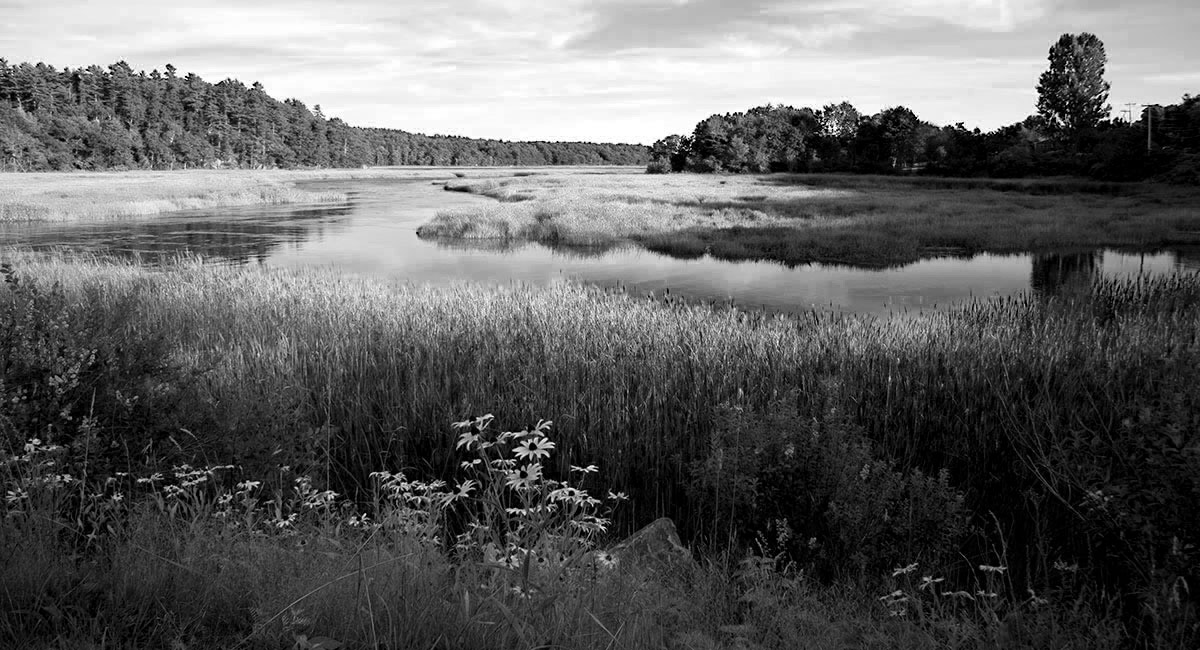
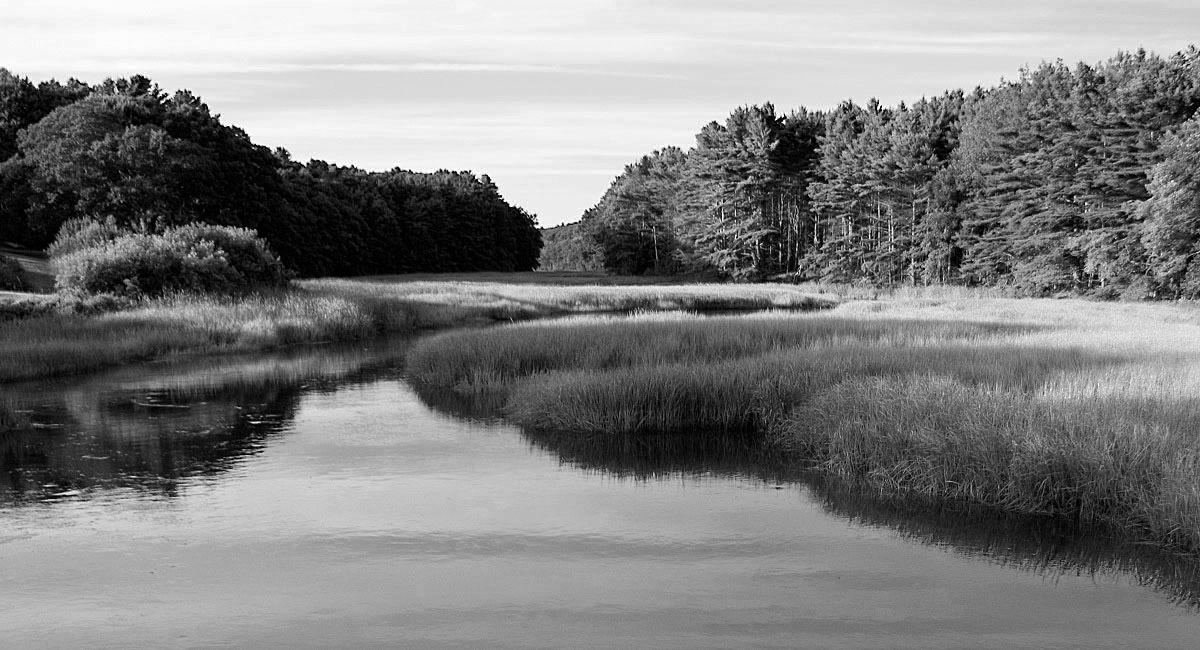
Likely not an original concept by a long shot, but perfect for my headspace at the time: my [then] city, New York, rising from a serene natural environment. At that time in particular, I was feeling a strong love/hate toward the city; I wanted nature, but couldn’t imagine ever wanting it badly enough to leave. “Cities of Cedar” were imagined natural metropolises, in that sense -- a refuge -- at least in title.
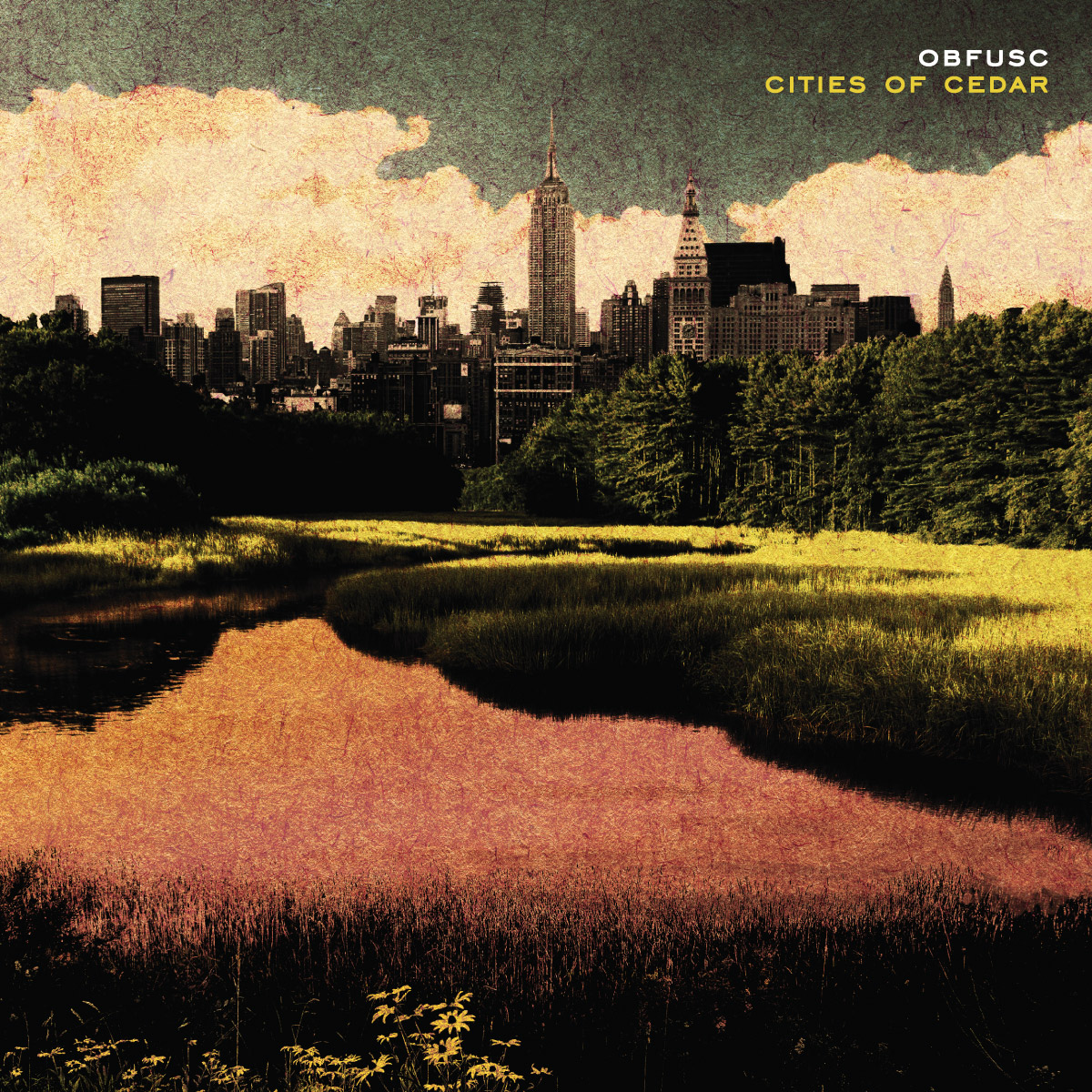
Track Commentary
01. Blue Morning Light
The opening of the album is a sort of swirling radio static that, as memory serves, is a combination of found sound: dead, buzzing air from recorded clips of air traffic control messages related to the “Janet” flights (Las Vegas > Area 51 — fascinating stuff) and random electrical interference boosted significantly. Since I’d thought of the album in more emotional/personal terms than previous output as Obfusc, I wanted the intro to be a waking, of sorts, with the synths toward the end emerging as a clarity of mind, more or less. My bedroom at the time had a panel of stained glass — yellow and blue — and as the sun would pour in, the colors could be quite intense (hence the title). The inclusion of notes from ‘Amateur Cartography’ was a last minute addition to bridge the gap; to give a nod to things to come.
02. Amateur Cartography
It’s often the simplest things prove the most effective; this track was one of the fastest, most spare compositions I’ve ever done, yet it’s become the most visible and popular (relatively speaking) Obfusc track with time. I love the track, still, and look back at its creation fondly. It was started quite late in the evening, in complete darkness, as a result of the experimentation that birthed the whirling synth sound: extremely dense patterns of MIDI notes beneath layers of delay and reverb. Once the bed was there, the looping melodies were added — it fell together very quickly. The textured synth bass (pure Boards of Canada worship) and drums — and later, the Rhodes melody — became the focal point, the things that really made the track come together for me; it all felt propulsive, like it was taking me somewhere. The feelings of exploration, sonically, mixed with the high emotions of something coming together so quickly, really left me with a youthful exuberance. I titled it ‘Amateur Cartography’ as a verbal homage to my days as a kid exploring and charting the woods near our house; building forts, drawing maps, visualizing the land as much more than it really was. Those woods are mostly gone now, so the visual and memory in my mind are all that remain.
03. Delayed Sunshine Reaction
So much of this track was a direct transfer of sonic inspiration from the 1975 film Three Days of the Condor. As Robert Redford commented on Faye Dunaway’s photographs, I made a mental note to go back and pull the samples; they were just perfect. Within the 3-4 minutes from the film I pulled, certain rhythmic segments (some breathing, a knocking sound) helped form a basis for the drums; the vocal samples created a bit of a story I liked the telling of. There’s a bit of a ‘vocal choir’ beneath the Redford vocal sample — coming from the television in the movie — that edited together really nicely and unintentionally. The first half of the track gives way to a bit of an emotional, analog resolve; I played (poorly) and recorded (poorly) a cheap borrowed guitar. I’d composed and exported notation for Katie, my wife, to play a trumpet part, but we couldn’t get it to sound as I’d hoped. The final version included synth horns which, I’ll confess, felt a bit like cheating (but the effect was okay).
04. Climb Through The Basement Window
The title came later, but it’s another random visual from childhood that stuck with me: a basement bedroom (in my grandparents’ house [they sold and moved before I was five]) with a means of egress (for fire safety) that was a tall window well with a ladder. It seemed rather strange at the time, probably since I was about 4 years old, and stuck with me. The track itself has nothing to do with basements, windows, or climbing through them; it’s an interlude, of sorts, containing a couple of field recordings I’d done between 2006 and 2007. The principle field recording is a man approaching Katie and I on a train platform in Kutná Hora, Czech Republic (offering us something, which Katie declined — I can’t recall what). Additionally, I had spent one evening recording the sound of coins in various configurations, including the one utilized, of a jar of pennies being dumped out. The looped acoustic guitar (and buried vocals) were arranged in a separate session that was mysteriously titled ‘Mining Hens’ and brought in. In retrospect, each element was pretty whimsical, but when brought together, they formed — in my opinion, at least — a bit of a strange sonic showcase.
05. Close Your Eyes and Daydream
The optimism of the psychedelic era — expansion of consciousness, spiritual enlightenment — is endlessly fascinating to me. Upon hearing a clip of a girl on LSD describing an orange — and living in a ‘monochromatic world’ — the track I’d been working on more-or-less formed around it. The words, while within the context of psychedelic experimentation, resonated with me in a context of mood, depression, anxiety, and loneliness. Katie had told me on numerous occasions that the music I made impacted her differently than it did others; she could hear my anxiety, my melancholy. The title, in conjunction with the nod to psychedelia, was a gentle suggestion of an escape; of seeking calm in an anxious mind.
06. Mood Gradients
I’d, by this time in my life, begun recognizing the patterns in my mood(s) — my oft-high spirits enduring for weeks, yielding wonderful, fruitful creative and social periods, eventually catching a snag and plummeting into 2-3 day depressive episodes. I’d withdraw, a bit — cancel plans, view whatever I’d been working on with a sort of shrug — until the figurative clouds parted and I bounced back to my regular mental effervescence. As time passes, my mood(s) are more consistent. I can identify when I’m feeling anxious and I don’t let it hit me the same crushing way I did when I was in my 20’s. Actually sleeping probably helps a lot, too. Back then, however, I visualized these mood gradients as patterns that had endured since my teens, possibly my childhood, and thus explained a lot about my personal nature. All of that to say, basically, that the title of the track came first and was perhaps more personal (and telling) than its content.
Around 2008, when the album was wrapping up, I’d been in talks with a number of folks about putting it out. One of them, a fellow named Jeff, had an absolutely insatiable hunger for new music, a lot of which was electronic. He’d turned me on to a number of things I still love today (Bliss aka Henrik José, ST’s People I Barely Know LP, Kilowatts’ Routes LP, etc.) and, off-handedly, said he’d be curious to hear a higher BPM Obfusc track. I started ‘Mood Gradients’ with that in mind, pairing with a number of samples from the classic Grey Gardens documentary that, to me, spoke a bit to my occasionally murky spirits:
“It’s a sea of leaves, a complete sea of leaves.. if you lose something, you can’t find it again, it drops to the bottom.”
07. Windchimes
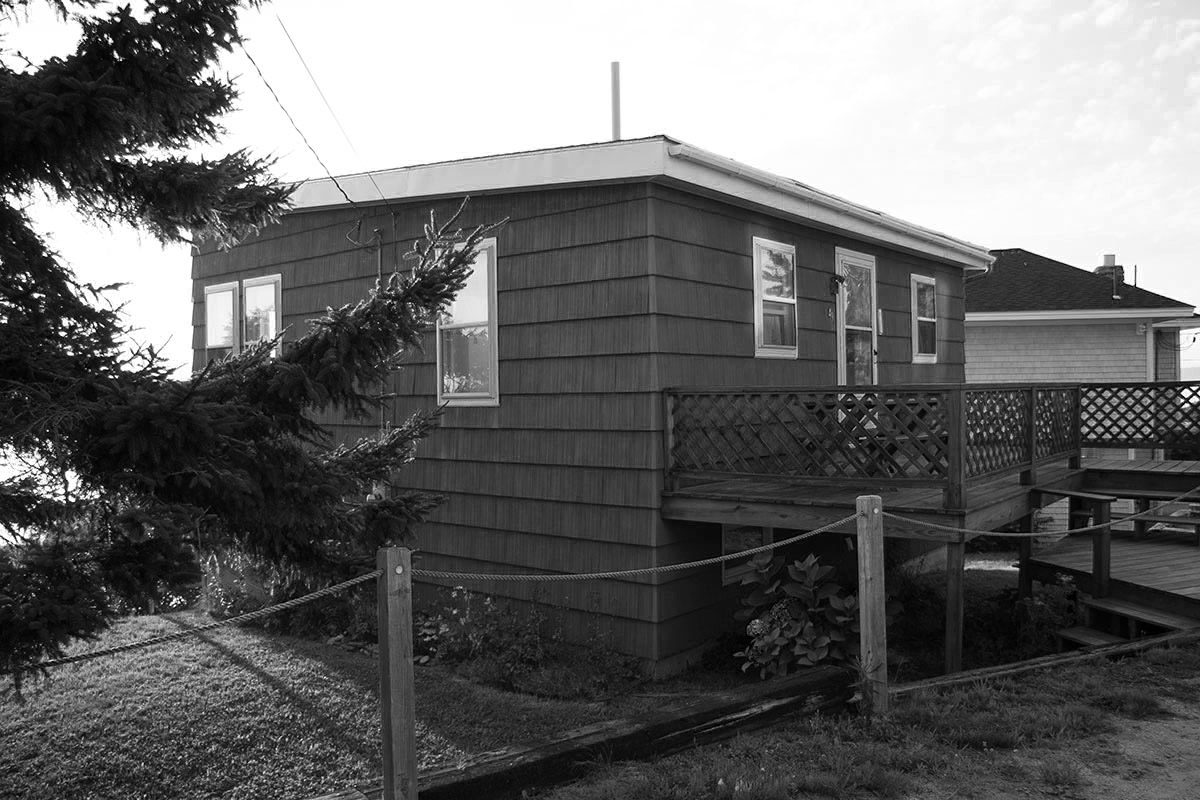
Recorded at a salty, red rental cottage in Bailey Island, Maine — the walls of which were covered in positively the most dated and charming bric-a-brac — during a windy evening. The sound of the windchimes and the tide coming in made for a nice document of the nocturnal vibe.
08. Sounds From Shattered Seashells
I’d made this track back in 2005 — really quickly and simply in Ableton Live — as part of a demo EP called Aqueous Forms. While the remainder of the EP I was quite content to see slowly sink to the bottom of the digital waste bin, this one always stuck in my craw as something worth releasing. Very little changed from its 2005 version, but, upon remixing in Logic, it felt aptly placed within the track list. My dad says this is his favorite thing I’ve ever made (and often says, “You should make more songs like that” [I've tried]). The song has since become one of my more popular ones (again, relatively, folks) given its connection to the Monument Valley soundtrack, so I’m glad it didn’t get left behind.
09. Morning Walk to the Pier
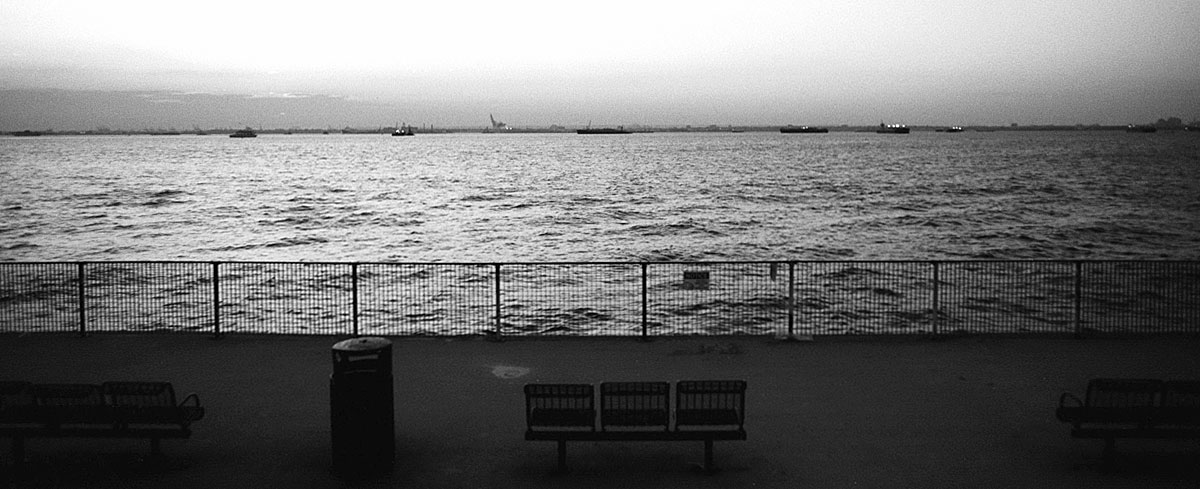
A few blocks from our apartment in Brooklyn (located in the Sunset Park neighborhood), adjacent to the old Brooklyn Army Terminal, was a long, jutting pier into the bay. It wasn’t much to look at — and wasn’t all that pleasant, really, given it was essentially a long parking lot — but it often served as a walking destination for solitary or group jaunts. The track title was simply a literal description of what I was doing whilst previewing demo mixes of the track, while also paying a bit of an homage to the pier as a contemplative resource. I front-loaded the track with random samples and field recordings, including a quick iPhone capture of my morning subway announcement: “N train to Manhattan. Step in, stand clear of the doors.”
10. A Physical Transition
It felt too strange to go from original compositions to a bevy of remixes — thus ‘A Physical Transition.’ I recorded the sounds of a typical Brooklyn night out front of the brownstone we were living in at the time, walking through the metal door, the wood door — both quite noisy — and into the hallway, then into our living room. Click (of a lock).
To stream or purchase Cities of Cedar in its entirety, please visit the Obfusc Bandcamp.
![JXB Circle Mark [Circle with JXB intersected by a ravine].](/assets/images/jxb_circle_mark.svg)


